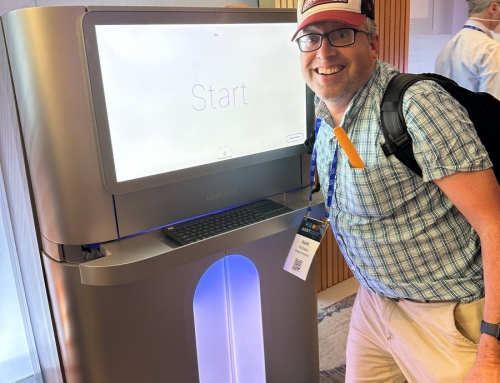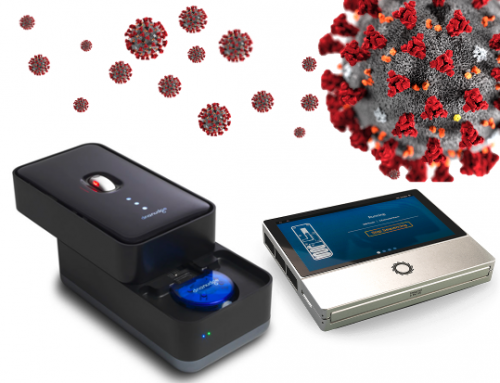This is a first for me as I’ve not finished this post at all! Instead I’m going to use this as a space to document my ideas, and experiences, in bringing Oxford Nanopore’s RNA-seq into my core lab at the CRUK Cambridge Institute. I’m hoping this will be a real success story for the lab over the next 6-12 months..but who know’s how long it’ll take. Watch this space for future updates.
“RNA-Seq is dead, long live RNA-Seq”
As I said earlier today, until Direct RNA-Seq was launched nobody was really sequencing RNA! Somehow RNA-Seq seemed such an easy way to explain what people were doing but it missed the mark so much – probably because “oligo-dT enriched poly-adenylated mRNA-Seq by conversion to cDNA with random primers after RNA fragmentation” does not slip off the tongue. I talked about this at the recent ABRF meeting in San Diego where I started by asking who was doing RNA-Seq (lots of hands went up) and then asked who was sequencing RNA (all the hands went donw).
Similarly people smugly point out that they are not limiting themselves to polyadenylated transcripts and are unning Total RNA-Seq instead; I will now point out to everyone they are neither correct about “Total” nor “RNA”; 1 out of 3 is bad. What is “total” RNA? A typical RNA extraction results in a complex mix dominated by a few species: tRNA, rRNA and some very highly expressed transcripts (e.g. Globin or Rubisco). The RNAs we generally want to sequence are expressed at low levels compared to these, which is why we usually enrich /deplete for mRNA/ncRNA which only account for perhaps 5% of cellular RNA.
What does a nanoporecore need for RNA-Seq
An “RNA-Seq” library prep: 10 million+ 1D cDNA reads from the new protocols being developed by ONT is certainly going to help. Their PCR-based strand-switching protocol makes use of the 1-3 non-templated C bases added to the 3′ ends of the cDNA strand (5′ of the RNA molecule). The kit includes a primer that anneals to these non-templated C bases meaning the reverse transcriptase does a molecular U-turn and switches back on itself to extend back to the 3′ end of the RNA molecule creating a ds-cDNA molecule with convenient PCR sites at both ends. Add adapters by 1D rapid ligation and sequence.
A sequencer: I’ll be looking at running some initial projects through our MinION. Depending on the experiments we attempt to kick off with a few flowcells should be fine, and reasonably cost-effective.
Voila – my @nanopore core RNA-Seq service is open for business.
Status May 2017:
I’m writing this on the way home from London Calling. I made lots of notes to talk to UCSC teams, and to get in touch with ONT. I need to persuade the institute to fund a couple of pilots. Also need to find time in the busy lab schedule (5000 Illumina libraries to make this year and 10,000 to sequence) to be able to run these pilots. Need to get our Bioinformatics core on board as well. I am also away for July/August in Japan so this is going to get in the way. It may be a few weeks (even months) before I make any real progress!
Please leave comments and I’ll incorporate then into this story as it grows.
Useful RNA-Seq references:
- Reading canonical and modified nucleotides in 16S ribosomal RNA using nanopore direct RNA sequencing
- On the design and prospects of direct RNA sequencing








any update on this?
I left my job at CRUK 18 months ago. Direct RNA-Seq is still on my radar and featured in my recent NRG review article. Take a look on Twitter to get an update on where things stand and look for those people posting to find a user to talk to.